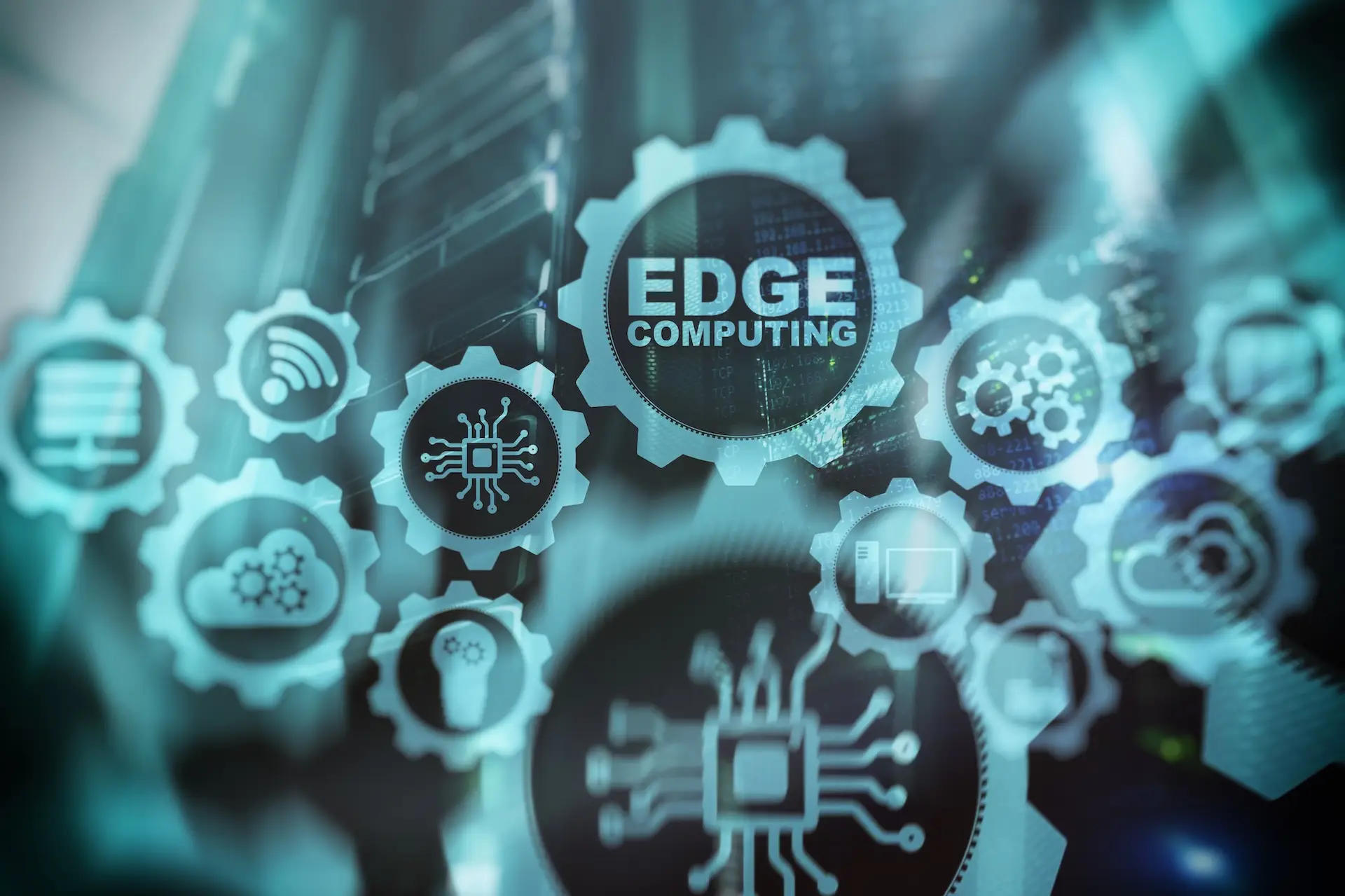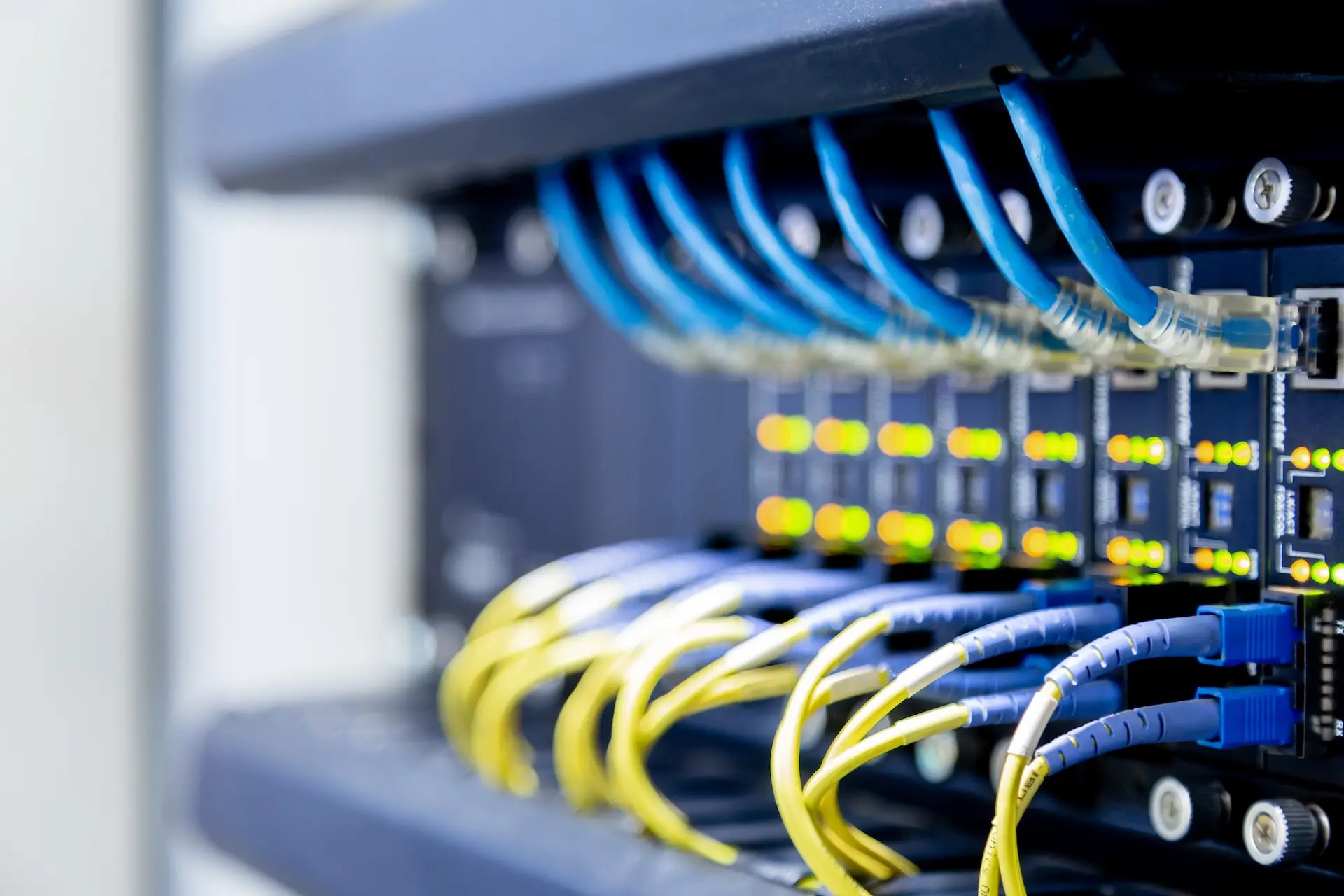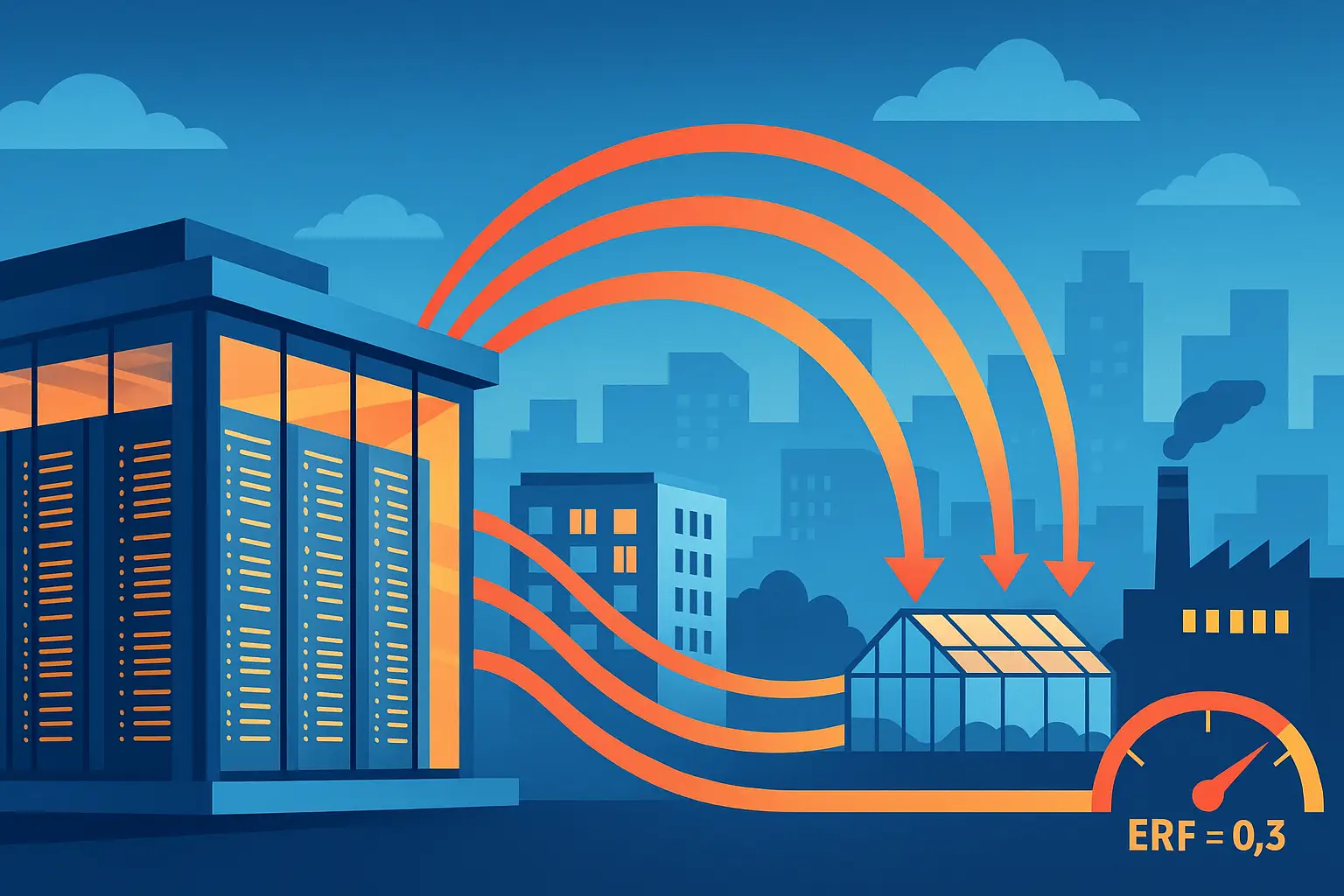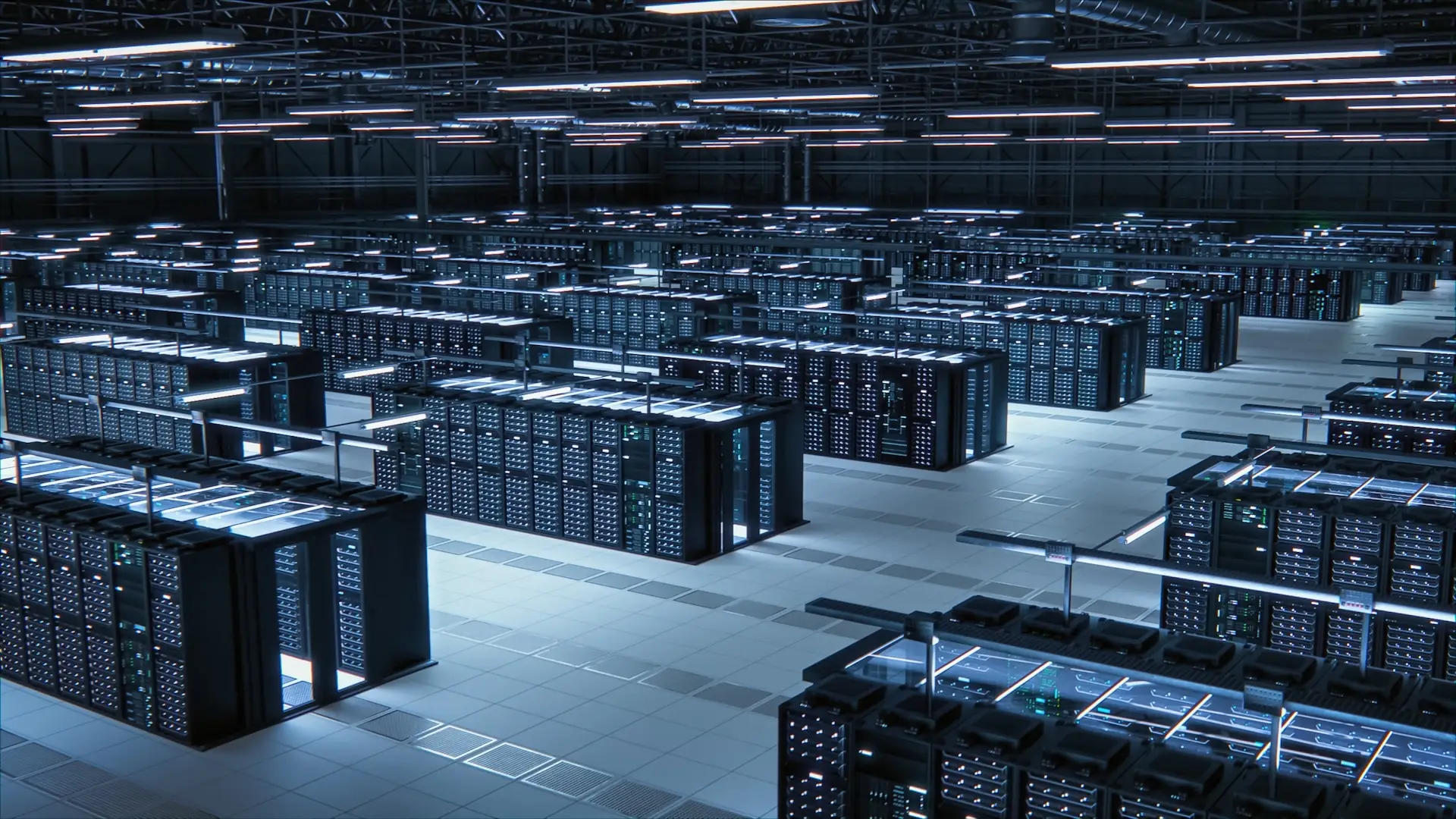2025 The Front Line of Digital Infrastructure
There are many business scenarios where milliseconds shape user experience and transactional outcomes, the location of computing power has become as important as its capacity. The edge data center is at the forefront of this transformation, enabling data to be processed closer to where it’s generated and consumed. This shift isn’t just technical—it’s reshaping industries, redefining network design, and creating new opportunities for competitive advantage.
From Centralized Giants to Distributed Powerhouses
Two decades ago, data processing revolved around large, centralized facilities—hyperscale cloud campuses and regional enterprise sites. This architecture worked for most workloads, but latency-sensitive applications such as live video streaming, industrial automation, and connected vehicles often faced performance bottlenecks.
The first wave of edge deployments emerged alongside the rise of mobile broadband and IoT. Telecom operators began placing micro data centers near cell towers to handle content delivery and reduce network strain. Over time, the concept matured: by the early 2020s, the rollout of 5G, combined with advances in virtualization and containerization, gave edge computing the agility to support not just caching, but full-fledged application hosting and analytics.
By 2025, the edge has evolved into a vital layer in the global digital ecosystem. These facilities now handle workloads ranging from AI inference for manufacturing to real-time traffic optimization in smart cities.

What Defines an Edge Data Center?
While definitions vary, an edge data center typically combines compact physical footprint, high connectivity, and strategic location. It brings compute, storage, and networking closer to end users or devices—often within a 10–20 millisecond latency range.
Key characteristics include:
- Proximity to demand sources, whether urban hubs, industrial sites, or remote facilities.
- Direct integration with telecom and fiber networks, enabling low-latency transport.
- Modular or containerized construction for rapid deployment and scalability.
- Secure, resilient operations despite smaller scale compared to hyperscale data centers.
This makes them distinct from colocation data centers, which typically serve as centralized hubs, and from hyperscale facilities that focus on massive-scale workloads. Edge sites instead complement the broader ecosystem, sitting between end devices and core cloud environments.

The Market in 2025: Growth Driven by Latency and Locality
The global edge data center market is projected to surpass $25 billion in value this year, with a compound annual growth rate exceeding 20% through 2030. Several factors are accelerating adoption:
- Telecom expansion with 5G and early 6G trials fueling mobile edge computing.
- AI at the edge reducing the need for constant cloud backhaul.
- IoT proliferation in sectors such as energy, transport, and healthcare.
- Digital experience demands in gaming, AR/VR, and media streaming.
- Regulatory requirements for data sovereignty and local processing.
North America leads in deployment for AI and advanced telecom services, while Asia-Pacific is seeing rapid growth in industrial IoT integration. Europe’s market momentum is driven by sustainability targets and GDPR-compliant architectures.

Advancements Defining the Future
Edge data centers in 2025 are adopting technologies that make them more powerful, sustainable, and integrated than ever before:
- AI-Optimized Infrastructure: Specialized processors for real-time analytics and AI inference.
- Sustainable Cooling: Liquid cooling, immersion systems, and waste heat recovery for low PUE.
- 6G-Ready Design: Preparing for ultra-reliable, low-latency, high-capacity future networks.
- Containerized Deployment: Prefabricated data center design solutions enabling rapid scaling.
- Security by Design: Hardware root-of-trust, encryption at rest and in motion, and AI-driven threat detection.
- Hybrid Cloud Integration: Seamless workload migration between edge nodes, cloud services, and Data Center as a Service (DCaaS)
Strategic Role in the Digital Ecosystem
Edge data centers are not replacements for core facilities—they are multipliers. A modern architecture often includes:
- Core hyperscale data centers for large-scale storage and batch processing.
- Regional colocation facilities for connectivity and interconnection.
- Edge nodes for real-time processing and compliance-driven workloads.
- Cloud and AIaaS platforms for flexible service delivery.
- Advisory input from data center consulting teams for design, optimization, and integration.
This layered approach ensures performance, resilience, and cost efficiency, while enabling organizations to adapt quickly to changing market and regulatory demands.
Edge Data Centers with 5G Integration
Integrating edge computing with 5G is crucial because it marries the ultra-low latency, high-throughput connectivity of 5G with localized, real-time processing at the network “edge.” This synergy enables applications—such as autonomous vehicles, industrial control loops, and immersive AR/VR—that simply can’t tolerate the 20–50 ms round-trip delays of a distant cloud.
As one recent analysis put it, “The role of 5G in driving edge data center growth is undeniable. As businesses and industries demand real-time processing, ultra-low latency, and enhanced connectivity, edge computing is emerging as a critical solution.” DataCenters
How Edge and 5G Are Defined
- Edge computing refers to deploying compute, storage, and analytics resources closer to where data is generated—often within micro-data centers at cell-towers, base-stations, or on-premises—so that processing can happen with minimal delay.
- 5G (fifth-generation mobile) offers significantly higher peak speeds (up to 10 Gbps), massive device density (up to 1 million devices/km²), and sub-10 ms air-interface latency compared to 4G.
Integration often takes the form of Multi-access Edge Computing (MEC) or “5G Edge,” where carriers or third-party colo-providers host edge servers in direct proximity to 5G radio access network components—thus ensuring that user traffic can be processed locally rather than traversing backhaul links to a centralized cloud. This “symbiotic” relationship means 5G carries the data slice, and edge nodes carry the compute slice, delivering a unified ultra-responsive platform EricssonRobots.net.
Real-World Integration Examples
- Retail: Automated Checkout & Analytics In “smart” stores, edge-enabled cameras and shelf sensors analyze customer movement and purchases in real time, automatically charging accounts upon exit—eliminating queues and enhancing personalization. Peakermap reports this is “transforming retail and redefining customer expectations” by processing video and IoT telemetry at the edge over 5G links Peaker Map.
- Smart Cities & Traffic Management Municipalities deploy small, decentralized edge sites alongside 5G small cells to process feeds from traffic cameras, environmental sensors, and public-safety devices. PwC notes these edge-in-5G setups “provide low-cost, low-latency support for high-device-density 5G use cases (e.g., smart-city applications)”—from adaptive traffic signals to real-time pollution monitoring PwC.
- Autonomous Vehicles & V2X Roadside edge nodes connected via 5G enable vehicle-to-everything (V2X) communications, processing telemetry with < 5 ms latencies. Business Insider highlights pilot projects in cities like Barcelona and Austin, where V2X sensors at the edge feed data to both vehicles and control centers to improve safety and traffic flow Business Insider.
- Industrial Automation & Quality Control Logistics firms like Ice Mobility leverage Verizon’s on-site 5G Edge combined with Microsoft Azure Stack Edge to run computer-vision workloads for product packing and inspection directly at their facilities. This approach delivers “low lag and high bandwidth” needed for machine-learning inference on the edge, boosting throughput and reducing errors Verizon.

Does Edge Computing Impact Sustainability
With these edge deployments it feels like it is contradictory to the needs of sustainability, zero-carbon, optimized cooling. Is this correct?
While it’s true that miniaturized edge sites can’t always match the economies of scale or deep-water cooling of hyperscale hubs, they needn’t be sustainability antitheses. Here’s how the trade-offs work and the strategies that make edge deployments compatible with zero-carbon, optimized-cooling goals:
- Smaller Scale ≠ Automatic Inefficiency
- Higher PUE potential: A micro data center—say, 10–50 racks—often can’t leverage the same multi-megawatt chilled-water plants or large adiabatic-cooling towers as a campus-scale facility. That can push its Power Usage Effectiveness (PUE) up into the 1.5–1.8 range, versus 1.1–1.3 for hyperscale sites.
- More sites, more overhead: Spreading capacity across hundreds or thousands of edge nodes increases the number of power feeds, UPS units, and cooling systems to maintain—each carrying fixed standby losses. Quantifying these trade-offs is exactly the use-case for tools like Schneider Electric’s TradeOff suite, which models ROI, TCO, carbon footprint, and energy-efficiency impacts across different power & cooling architectures Schneider Electric.
- Free Cooling, Liquid Loops & Local Renewables
- Free-air and evaporative cooling: Even compact edge modules can integrate outside-air economizers or small adiabatic units, slashing compressor runtime and cutting cooling energy by up to 30%. Paired with direct-to-chip or warm-water liquid loops, these systems drive PUE down toward 1.2–1.4 Reboot Monkey.
- On-site solar and “renewables-ready” design: Vendors like Zella DC offer micro data centers pre-configured for rooftop or adjacent PV arrays, and even plug-and-play battery back-up, so a cluster of edge nodes can run partially off-grid, smoothing renewables intermittency Zella DC.
- Microgrids & Grid-Edge Integration
- Local microgrids: Coupling an edge site with a microgrid—solar panels, battery storage, and sometimes a small gas Turbine—lets you island from the grid during peak rates or outages while maintaining 100% green-energy operation Hitachi Energy.
- Live case: DTECH Midwest (Minneapolis) operates a combined data center + microgrid, demonstrating how edge-scale power systems can stabilize both local distribution and rack-level loads without sacrificing resiliency Factor This™.
- AI-Optimized Energy Management
- Predictive cooling controls: Embedding ML into your DCIM to analyze real-time sensor data—temperature, humidity, inlet/outlet differentials—enables dynamic fan speeds, targeted liquid-flow adjustments, and pre-emptive hot-aisle containment tweaks. Early adopters report 5–15% additional energy reductions on top of hardware gains Business Insider.
- Network-Level Efficiency Gains
- Reduced backhaul energy: By processing video, analytics or AI inference locally, edge nodes cut the volume of uplink traffic to central clouds. That doesn’t just save bandwidth—it trims energy spent in long-haul routers, aggregation switches, and core PoPs. While harder to quantify, network-energy savings can offset a significant portion of the micro site’s own inefficiencies.
Bottom Line:
Edge-colocated facilities do introduce sustainability challenges—smaller mechanical plants, more distributed power systems—but those can be fully addressed through:
- Advanced cooling (free cooling, immersion, liquid loops)
- On-site renewables & microgrids
- AI-driven energy management
- Holistic lifecycle metrics (PUE + CUE + WUE)
With these in place, edge deployments can hit carbon-neutral targets and even improve overall network carbon-usage effectiveness. They aren’t inherently at odds with green goals—provided they’re designed and operated with the same rigor as any hyperscale data center.
Comparison Of Edge Data Center with Traditional Colocation Deployment
Below is a concrete, side-by-side comparison of the two deployment models for our “Smart Cities & Traffic Management” example. First we define the workflows and network, then we show illustrative metrics in a table, and finally we point out exactly why the purely centralized model struggles versus an edge-enabled design.
1) Scenario A – Centralized Data Center
Architecture & Workflow
- Data Sources:
- 100 traffic cameras (1080p, 4 Mbps each)
- 200 environmental sensors (pollution, temperature, occupancy; 0.1 Mbps aggregate)
- Network Path:
- Cameras & sensors → local 4G/5G base station → metro aggregation PoP
- Backhaul via 20 km of fiber to central DC (average RTT ≈ 50 ms)
- All raw video and sensor streams ingested into central DC for processing and analytics
- Processing:
- Video AI (object detection, vehicle counting) runs on GPU clusters in central DC
- Control commands (e.g., adapt traffic‐signal timings) sent back across same 50 ms RTT
- Bottlenecks & Costs:
- Massive bandwidth: 100×4 Mbps = 400 Mbps just for video, plus sensor traffic → high transit costs
- High latency: ~50 ms one-way (100 ms round-trip) before any processing begins
- Delayed response: Traffic lights react slowly to real events (pedestrians, accidents)
- Inefficient uplink: Central DC sees 1.44 TB data/hour, yet 90% of raw footage is discarded after analytics
2) Scenario B – Edge-Enabled Data Center
Architecture & Workflow
- Data Sources: (same 100 cameras + 200 sensors)
- Edge Site Location:
- Micro-data center colocated at the 5G aggregation PoP (within 2 km of all cameras; <10 ms RTT)
- Lightweight GPU rack for inference + local storage
- Local Processing at Edge:
- Video inference: object detection → send “vehicle count” & alert events only (≈0.02 Mbps per camera)
- Sensor aggregation: pollution/occupancy data aggregated into 1 second summaries
- Central Coordination:
- Edge site forwards consolidated summaries (≈5 Mbps total) every 1 minute to central DC
- Central DC maintains city-wide dashboard, long-term ML training, and cross-intersection optimizations
- Benefits:
- Low latency: <10 ms one-way to edge AI → near-instant traffic-signal adjustments
- Drastically reduced bandwidth: 100×0.02 Mbps = 2 Mbps video metadata + 3 Mbps sensors → 5 Mbps uplink
- Local resiliency: If WAN fails, edge site continues safe operation autonomously
- Efficient use of central DC: only high-value, aggregated data traverses WAN
Comparative Metrics
Metric | Centralized DC | Edge-Enabled DC |
|---|---|---|
| Cameras streaming (1080p, 4 Mbps each) | 400 Mbps inbound | 400 Mbps local |
| Sensors streaming (0.1 Mbps total) | 0.1 Mbps inbound | 0.1 Mbps local |
| WAN bandwidth used | 400.1 Mbps | 5 Mbps |
| Data transferred per hour | 1.44 TB | 0.018 TB (18 GB) |
| Average one-way latency (camera→AI) | 50 ms | 10 ms |
| Round-trip AI decision time | ~100 ms + processing | ~20 ms + processing |
| Real-time responsiveness | Poor (delays) | Excellent (real-time) |
| Network cost (transit & peering) | High | Low |
Why the Centralized Model Fails
- Bandwidth waste:44 TB/hr of raw video crosses the WAN, only to be dropped after edge-level filtering.
- Sluggish control: 100 ms+ RTT means traffic lights and safety systems respond too late to fast-moving events.
- High transit cost: Leasing 400 Mbps of long-haul fiber/backhaul is expensive and scales poorly with growing camera fleets.
Why Edge-Enabled Shines
- Local AI inference: Processes video & sensor data at the PoP, minimizing raw WAN traffic.
- Ultra-low latency: Sub-10 ms delays allow truly real-time applications (adaptive signals, collision avoidance).
- Resilience & cost-efficiency: Edge sites operate standalone during outages and slash network bills by >90%.
Visualizing The Difference

Conclusion
Edge data centers have moved from a niche concept to a cornerstone of modern digital infrastructure. By bringing computing resources closer to where data is generated, they unlock the speed, efficiency, and agility needed for next-generation applications—from autonomous vehicles to immersive digital experiences.
As 5G integration, AI-driven analytics, and sustainable design practices continue to mature, the edge will not only complement but also transform traditional data center strategies.
The future belongs to organizations that can orchestrate a balanced ecosystem of core, colocation, and edge facilities—tailored to specific latency, compliance, and scalability needs.
Unlock the Power of the Edge
Partner with Azura Consultancy to design, optimize, and deploy next-generation edge, colocation, and cloud-integrated data centers. From concept to certification, our experts deliver resilient, energy-efficient, and AI-ready solutions that keep you ahead in a low-latency, high-data world.
Azura Consultancy – Your Partner in Edge Data Center Solutions
At Azura Consultancy, we provide end-to-end data center design and consultancy services that cover everything from hyperscale facilities to colocation and edge deployments. Our team of Uptime Institute Accredited Tier Designers specializes in feasibility studies, site selection, and technical due diligence to ensure your facility meets the highest standards for reliability, sustainability, and performance.
We bring deep expertise in Data Center as a Service (DCaaS) models, enabling clients to deploy infrastructure quickly, efficiently, and with optimal energy use. By leveraging cutting-edge cooling solutions, renewable power integration, and advanced network design, we help organizations future-proof their data strategies.
Our capabilities extend beyond core data center design to include colocation infrastructure consulting, AI-ready data hall design, and integration with smart city frameworks. Whether your goal is to enhance uptime, reduce operational costs, or prepare for AI-driven workloads, we provide the strategic and technical expertise to make it happen.










